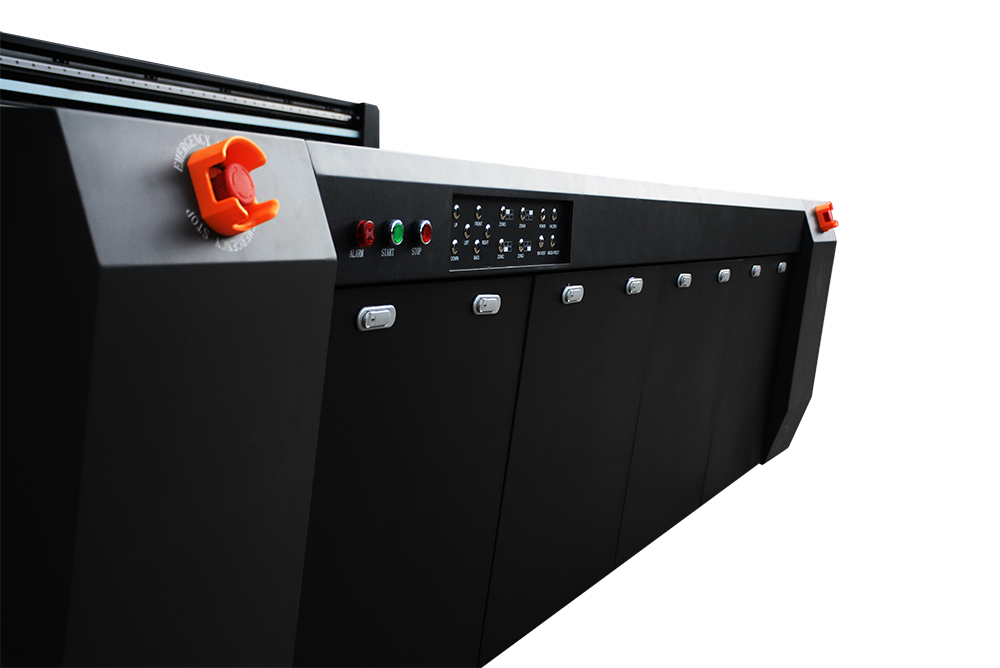What Are the Benefits of a White Ink Option in UV Flatbed Printing?
What Are the Benefits of a White Ink Option in UV Flatbed Printing?
UV flatbed printing has revolutionized the way we approach digital printing, offering versatility, precision, and vibrant colors. Among the many advancements in this technology, the introduction of white ink as an option has significantly enhanced its capabilities. This article delves into the numerous benefits that a white ink option brings to UV flatbed printing, exploring how it expands creative possibilities, improves print quality, and increases application versatility.

1. Enhanced Print Visibility and Contrast
One of the most显著 benefits of white ink in UV flatbed printing is its ability to enhance visibility and contrast, especially on transparent or dark-colored substrates. Traditional UV inks are translucent, meaning they rely on the substrate’s color for visibility. White ink, however, creates a solid base layer that allows vibrant colors to pop, even on challenging surfaces. This is particularly useful for printing on materials like glass, acrylic, or dark-colored plastics, where achieving high contrast and opacity can be difficult without white ink.
2. Increased Application Versatility
With white ink, UV flatbed printers can accommodate a wider range of substrates and applications. From promotional items and packaging to architectural signage and decorative pieces, the ability to print opaque white layers opens up new markets and design possibilities. For instance, printing directly onto wood or metal surfaces with white ink provides a clean, professional finish that would otherwise require pre-coating or priming.
3. Improved Print Quality and Durability
White ink acts as a primer, creating a smooth surface for subsequent color layers to adhere to. This not only improves print quality by reducing ink bleeding and dot gain but also enhances durability. The added layer of white ink provides extra protection against fading, scratching, and other forms of wear and tear. UV-cured inks are inherently durable due to their instant curing process, and the inclusion of white ink further reinforces this durability, making prints more resistant to environmental factors.
4. Creative Flexibility and Design Versatility
From a design perspective, white ink introduces endless creative possibilities. Designers can now incorporate reverse printing techniques, where colors are printed on top of a white background for a striking, high-contrast effect. This technique is particularly effective for creating eye-catching graphics and logos. Additionally, white ink can be used to create textured effects or to simulate embossing and debossing, adding depth and dimension to prints.
5. Cost-Effectiveness and Efficiency
While the initial cost of incorporating white ink into a UV flatbed printing setup may be higher, the long-term benefits outweigh the investment. White ink eliminates the need for pre-coating or priming certain substrates, reducing material costs and labor time. Furthermore, the ability to print directly onto a wider range of materials without the need for outsourcing or additional finishing processes streamlines production, making the overall process more efficient and cost-effective.
6. Environmental Considerations
UV flatbed printing with white ink is also an environmentally friendly choice. UV inks are solvent-free and emit low volatile organic compounds (VOCs), making them a safer option for both printers and the environment. The ability to print directly onto various substrates without the need for additional coatings or treatments reduces waste and energy consumption. As sustainability becomes a growing concern in the printing industry, UV flatbed printing with white ink offers a greener alternative.
7. Market Expansion and Differentiation
Offering UV flatbed printing with white ink capabilities can give printers a competitive edge in the market. With the ability to produce high-quality prints on a diverse range of materials, printers can differentiate themselves by offering unique and innovative solutions to clients. This versatility allows printers to tap into niche markets and cater to clients with specific needs, ultimately expanding their business opportunities.
8. Versatility in Print Finishes
White ink in UV flatbed printing also enables the creation of various print finishes, including matte, gloss, and even textured effects. By adjusting the ink laydown and curing process, printers can achieve different visual and tactile effects, further enhancing the versatility of their prints. This flexibility allows for the creation of custom finishes that cater to specific brand identities or design requirements.
9. Simplified Workflow and Reduced Downtime
Incorporating white ink into a UV flatbed printing workflow can simplify the overall production process. With the ability to print directly onto various substrates without the need for additional pre-treatment or finishing steps, printers can reduce downtime and increase productivity. This streamlined workflow also minimizes the risk of errors and inconsistencies, ensuring consistent print quality across different materials.
10. Future-Proof Investment
As technology continues to advance, investing in a UV flatbed printer with white ink capabilities is a future-proof decision. With ongoing innovations in ink chemistry and printhead technology, the potential applications and benefits of white ink will only continue to grow. By staying ahead of the curve, printers can ensure they are equipped to meet the evolving demands of the market and their clients.
In conclusion, the benefits of a white ink option in UV flatbed printing are numerous and far-reaching. From enhanced print visibility and contrast to increased application versatility and improved print quality, white ink opens up new creative and business opportunities for printers. As the demand for unique and innovative print solutions continues to rise, UV flatbed printing with white ink capabilities will remain a valuable and competitive asset in the printing industry.
